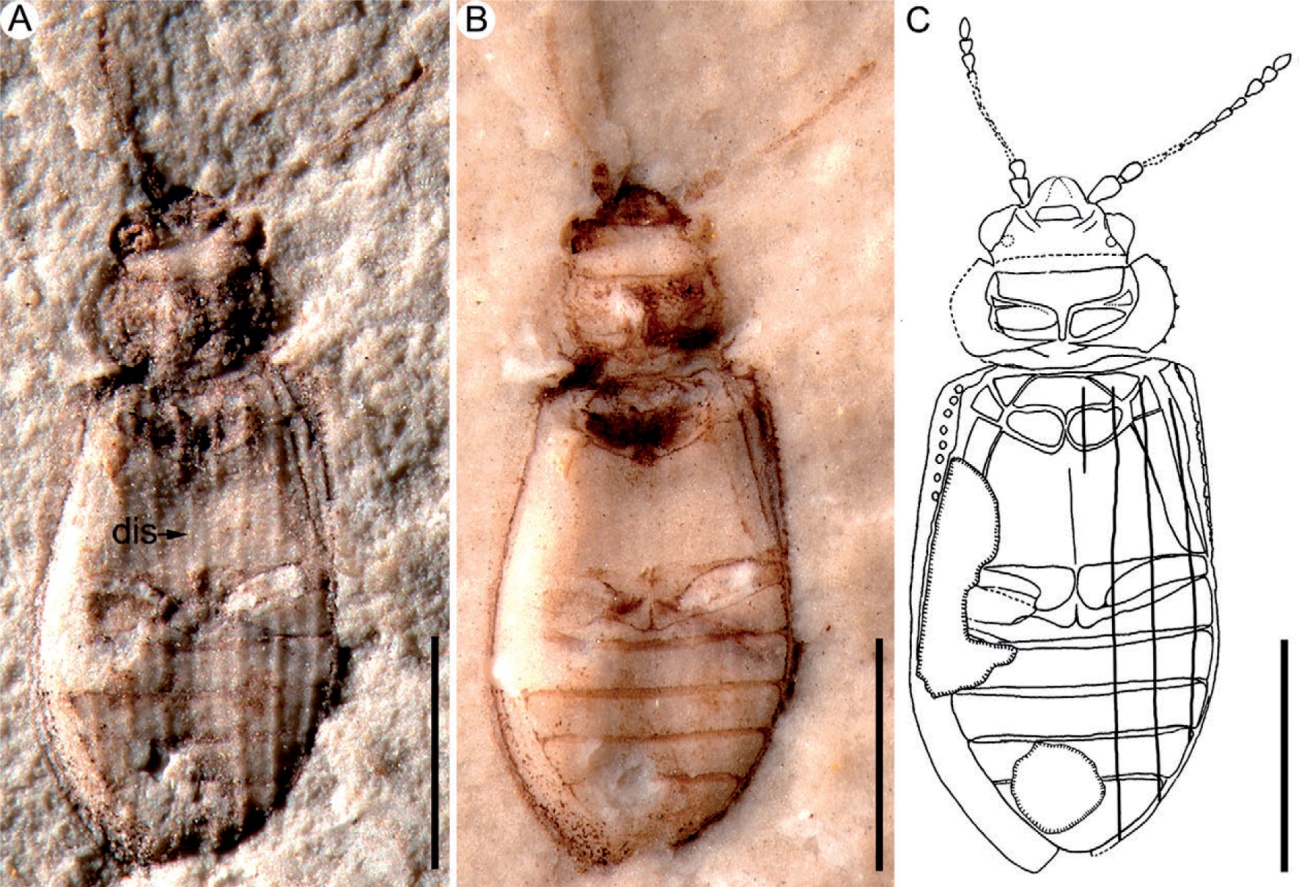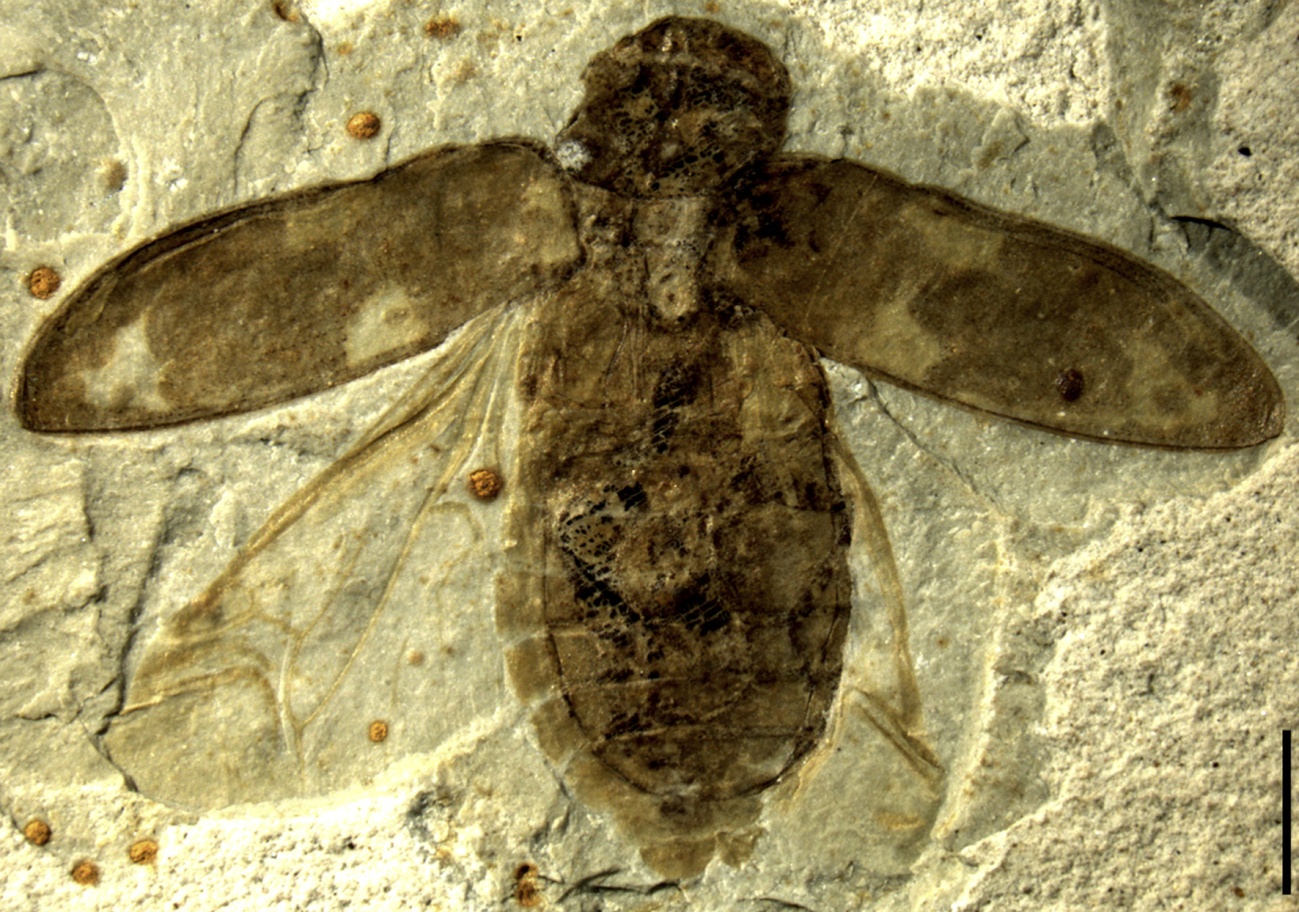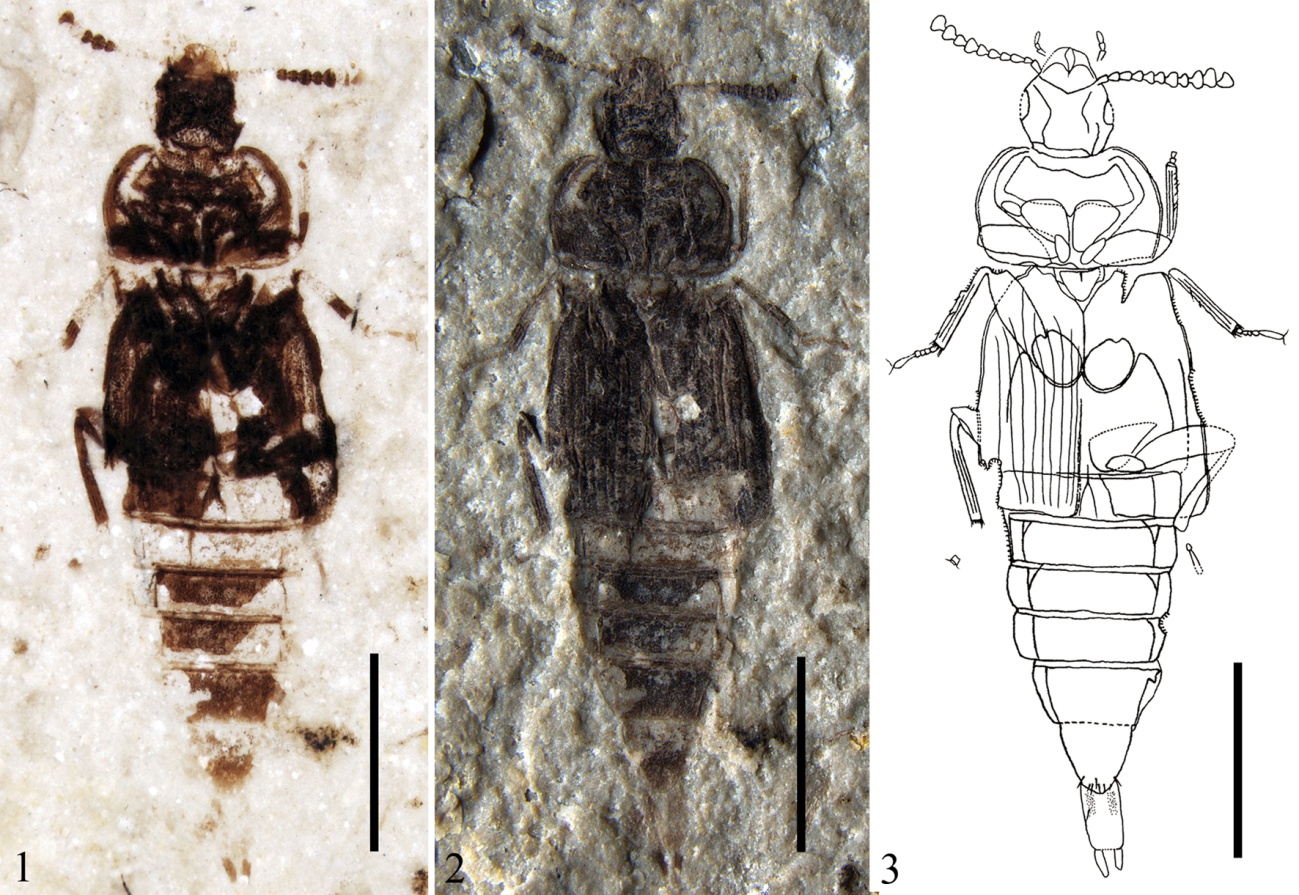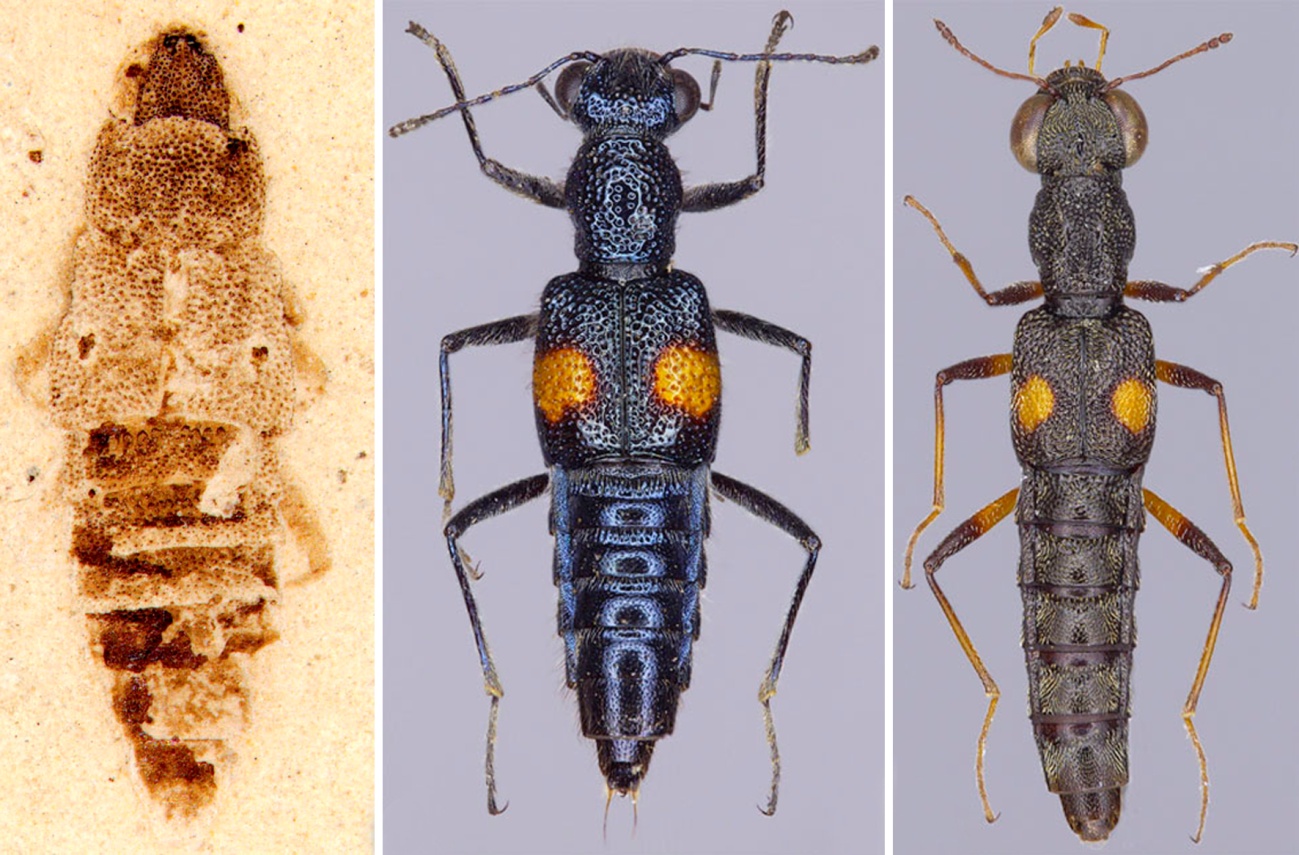Coleoptera, or so-called beetles, is one of the most diverse and widespread groups of Insecta. More than 350,0000 beetles have been described to date, accounting for one third of all known insects. Coleoptera is divided into four suborders, and Polypaha including 144 extant families and 16 superfamilies is the largest group, accounting for about 90% of all beetles. Study on fossil polyphagan beetles is of great significance for understanding the origin and early diversification, systematics, and paleogeography of those beetles.
Recently, PhD student Mr. CAI Chenyang and Prof. HUANG Diying from Nanjing Institute of Geology and Palaeontology, Chinese Academy of Sciences reported four polyphagan beetles from the Middle Jurassic (ca. 165 Ma) Daohugou biota at Daohugou, Ningcheng County, Inner Mongolia, the Yixian Formation (ca. 125 Ma) at Bisiyingzi, Ningcheng County, Inner Mongolia, and the upper Eocene from southern France, including Derodontidae, Schizopodidae and Staphylinidae.
1. First discovery of Mesozoic Derodontidae. With only 23 species placed in four genera, the beetle family Derodontidae (or tooth necked fungus beetles) is an isolated and primitive group in Polyphaga placed in their own superfamily Derodontoidea. The first fossil tooth-necked fungus beetle, Juropeltastica sinica, is described and illustrated based on a single impression fossil from the Middle Jurassic Daohugou beds (ca. 165 Ma) of northeastern China. It represents the first definitive fossil belonging to Derodontidae. The occurrence of a reliable derodontid fossil from 165 million years ago places Derodontidae among the small but growing number of beetle families of known Middle Jurassic age, which is important in the dating of phylogenetic trees.
2. Oldest false jewel beetle. With only seven extant species placed in three genera, the buprestoid family Schizopodidae (or false jewel beetles) is a small group of beetles endemic to the western North America, including California, southern Nevada, southwestern Arizona, and northern Baja California. A new false jewel beetle, Mesoschizopus elegans, is described from the Lower Cretaceous Yixian Formation of China. It represents a definitive Mesozoic fossil belonging to the recent small buprestoid family Schizopodidae, highlighting the antiquity of the small family, and providing an example of a now narrowly distributed group whose ancestral groups were probably more widespread in the Mesozoic.
3. A primitive and enigmatic rove beetle. Staphylinidae is one of the most diverse groups of animals, with more than 60,000 described species placed in one extinct and 32 extant subfamilies. A new unusual rove beetle, Mesapatetica aenigmatica, is described from the Middle Jurassic (ca. 165 Ma) of China. The new species displays an enigmatic combination of features belonging to the two basal subfamilies Apateticinae and Trigonurinae. The discovery of the genus from the Middle Jurassic reinforces the hypothesis that Apateticinae and Trigonurinae are sister taxa and together form one of the earliest lineages of Staphylinidae.
4. A new stenine genus. The rove beetle subfamily Steninae comprises 2763 described species placed in two extant genera, representing a remarkable beetle radiation found in all biogeographical regions except Antarctica and New Zealand. Fossil stenines are very rare and are confined to extant genera. A remarkable new genus and species of rove beetle, Eocenostenus fossilis, is described from the late Eocene of Monteils, France. This discovery highlights the palaeodiversity of a genus-poor subfamily and suggests that the early diversification of Steninae is probably complicated
These researches were supported by the National Basic Research Program of China, Outstanding Youth Foundation of Jiangsu Province, and the National Natural Science Foundation of China.
Related information of the papers:
1. Chenyang Cai, John F. Lawrence, Adam ?lipiński, Diying Huang (2014) First fossil tooth-necked fungus beetle (Coleoptera: Derodontidae): Juropeltastica sinica gen. n. sp. n. from the Middle Jurassic of China. European Journal of Entomology 111(2): 299-302
2. Chenyang Cai, Diying Huang, Alfred Newton, Margaret Thayer (2014) Mesapatetica aenigmatica, a new genus and species of rove beetles (Coleoptera, Staphylinidae) from the Middle Jurassic of China. Journal of the Kansas Entomological Society 87(2): 219-224
3. Chenyang Cai, Adam ?lipiński, Diying Huang (2014) First false jewel beetle (Coleoptera: Schizopodidae) from the Lower Cretaceous of China. Cretaceous Research doi: 10.1016/j.cretres.2014.03.028
4. Chenyang Cai, Dave Clarke, Diying Huang, André Nel (2014) A new genus and species of Steninae from the Late Eocene of France (Coleoptera, Staphylinidae). doi: 10.1080/03115518.2014.924351

Fig. 1. First Mesozoic Derodontidae

Fig. 2. Oldest false jewel beetle

Fig. 3. A primitive and enigmatic rove beetle

Fig. 4. Eocene stenine Eocenostenus fossilis Cai et al., 2014 (Left), Recent Dianous sp. (Middle) and Stenus sp. (Right)
Download:
